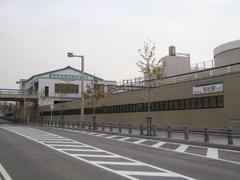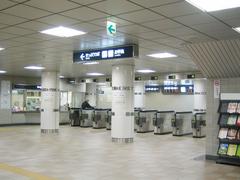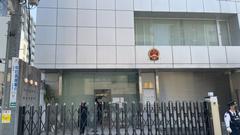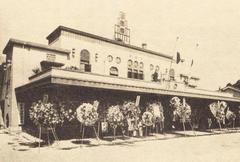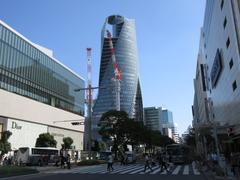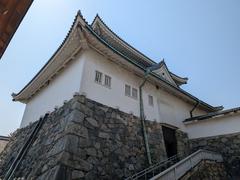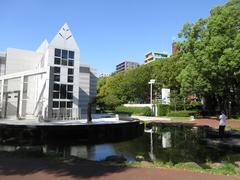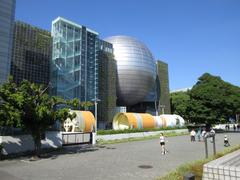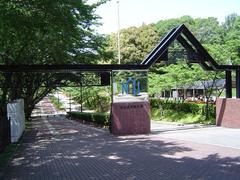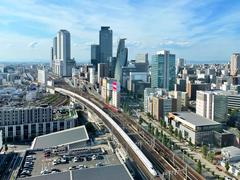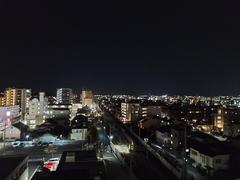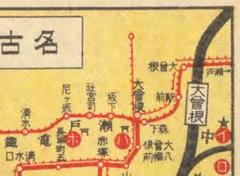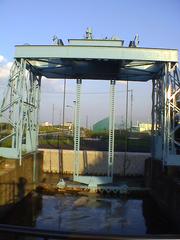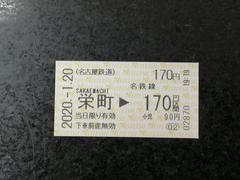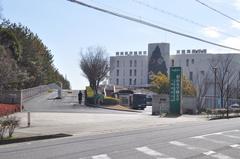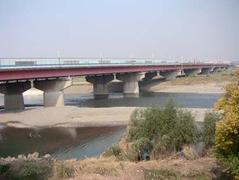Comprehensive Guide to Visiting Nishiki-dori, Nagoya, Japan
Date: 23/07/2024
Introduction
Nishiki-dori, located in the heart of Nagoya, Japan, is a vibrant and historically rich thoroughfare that has evolved from a bustling textile hub during the Edo period to a modern commercial and cultural center. Known for its luxurious goods, the street’s name ‘Nishiki’ translates to ‘brocade,’ symbolizing the area’s historical association with high-quality fabrics and opulence. From its strategic location near Nagoya Castle, constructed by Tokugawa Ieyasu, to its role in Japan’s rapid modernization during the Meiji Restoration, Nishiki-dori has been a focal point of commerce and culture for centuries. The street has withstood the test of time, including the devastations of World War II, emerging as a modern urban center characterized by a blend of traditional and contemporary architecture. Today, Nishiki-dori continues to be a significant commercial hub, attracting business travelers, tourists, and locals alike. Its rich history, cultural significance, and modern amenities make it an essential destination for anyone exploring Nagoya. (Mitsukoshi Nagoya, Nagoya TV Tower)
Table of Contents
- Introduction
- Origins and Early Development
- Meiji Restoration and Modernization
- Post-War Reconstruction and Economic Boom
- Cultural Significance and Festivals
- Architectural Evolution
- Visitor Information
- Economic Impact and Commercial Hub
- Preservation and Future Development
- FAQ
- Conclusion
Discover the Rich History of Nishiki-dori - A Guide to Nagoya’s Vibrant Commercial Street
Origins and Early Development
Nishiki-dori’s history dates back to the Edo period (1603-1868). During this time, Nagoya was a bustling castle town centered around Nagoya Castle, constructed by Tokugawa Ieyasu. Nishiki-dori emerged as a significant commercial street due to its strategic location near the castle and the main thoroughfares connecting various parts of the city.
The street’s name, ‘Nishiki,’ translates to ‘brocade,’ symbolizing the vibrant and luxurious nature of the area. Initially, Nishiki-dori was known for its textile shops, which sold high-quality silk and other fabrics. These shops attracted merchants and customers from all over Japan, contributing to the street’s early prosperity.
Meiji Restoration and Modernization
The Meiji Restoration in 1868 marked a period of rapid modernization and industrialization in Japan. Nagoya, including Nishiki-dori, underwent significant changes during this era. The introduction of Western technologies and infrastructure led to the development of new industries and the expansion of existing ones.
Nishiki-dori evolved from a traditional commercial street into a modern shopping district. The construction of new buildings, including department stores and entertainment venues, transformed the area into a bustling urban center. The street became a symbol of Nagoya’s modernization and economic growth.
Post-War Reconstruction and Economic Boom
The devastation of World War II left much of Nagoya, including Nishiki-dori, in ruins. However, the post-war reconstruction efforts led to a period of rapid economic growth and urban development. Nishiki-dori was rebuilt with modern infrastructure and became a hub for business and commerce.
During the 1950s and 1960s, Japan experienced an economic boom, and Nishiki-dori benefited from this prosperity. The street saw the establishment of numerous businesses, including banks, corporate offices, and luxury hotels. This period also marked the rise of the entertainment industry, with the opening of theaters, cinemas, and nightclubs along Nishiki-dori.
Cultural Significance and Festivals
Nishiki-dori holds cultural significance for the people of Nagoya. The street is known for hosting various festivals and events throughout the year, attracting both locals and tourists. One of the most notable events is the Nagoya Festival, held annually in October. The festival features parades, traditional performances, and food stalls, showcasing the rich cultural heritage of the region.
Another significant event is the Nishiki-dori Illumination, which takes place during the winter months. The street is adorned with thousands of LED lights, creating a magical atmosphere that draws visitors from all over Japan. The illumination event has become a popular attraction, contributing to the street’s cultural and economic vitality.
Architectural Evolution
The architectural landscape of Nishiki-dori has evolved significantly over the years. The street features a mix of traditional and modern buildings, reflecting its historical and contemporary significance. Some of the notable architectural landmarks include:
-
Mitsukoshi Department Store - Established in 1611, Mitsukoshi is one of Japan’s oldest and most prestigious department stores. The Nagoya branch, located on Nishiki-dori, is housed in a modern building that blends traditional Japanese design elements with contemporary architecture. (Mitsukoshi Nagoya)
-
Nagoya TV Tower - Completed in 1954, the Nagoya TV Tower is a prominent landmark near Nishiki-dori. The tower stands at 180 meters and offers panoramic views of the city. It is an iconic symbol of Nagoya’s post-war reconstruction and modernization. (Nagoya TV Tower)
-
Nishiki 3-chome Building - This modern commercial building is home to various shops, restaurants, and offices. Its sleek design and contemporary architecture make it a standout feature on Nishiki-dori.
Visitor Information
Visiting Hours - Nishiki-dori is open 24/7, but individual shops and businesses have their own operating hours. It is advisable to check the specific timings of places you wish to visit.
Tickets - There are no entry tickets required to visit Nishiki-dori. However, some attractions like the Nagoya TV Tower may have their own ticketing systems.
Travel Tips - Nishiki-dori is well-connected by public transport. The nearest station is Sakae Station, which is a short walk from the street. It is advisable to wear comfortable walking shoes as there is a lot to explore.
Nearby Attractions - Besides Nishiki-dori, visitors can explore nearby attractions like Nagoya Castle, Osu Shopping District, and the Nagoya City Science Museum.
Accessibility - Nishiki-dori is wheelchair accessible, and most shops and buildings have facilities for people with disabilities.
Economic Impact and Commercial Hub
Nishiki-dori has long been a vital commercial hub in Nagoya. The street is home to numerous businesses, ranging from small shops to large corporations. The economic impact of Nishiki-dori extends beyond the local economy, contributing to Nagoya’s status as a major economic center in Japan.
The street’s strategic location near Nagoya Station, one of Japan’s busiest transportation hubs, further enhances its commercial significance. Nishiki-dori attracts a diverse range of visitors, including business travelers, tourists, and locals, driving economic activity in the area.
Preservation and Future Development
Efforts to preserve the historical and cultural heritage of Nishiki-dori are ongoing. The local government and community organizations work together to maintain the street’s unique character while promoting sustainable development. Initiatives include the restoration of historical buildings, the promotion of cultural events, and the implementation of green spaces.
Looking to the future, Nishiki-dori is poised to continue its evolution as a vibrant commercial and cultural center. The street’s rich history, combined with its modern amenities and attractions, ensures that it remains a must-visit destination for anyone exploring Nagoya.
FAQ
What are the visiting hours for Nishiki-dori? Nishiki-dori is open 24/7, but individual businesses have their own operating hours.
Are there guided tours available at Nishiki-dori? While there are no official guided tours, many travel agencies offer guided tours that include Nishiki-dori as part of their itinerary.
Is Nishiki-dori wheelchair accessible? Yes, Nishiki-dori is wheelchair accessible, and most buildings have facilities for people with disabilities.
What are some nearby attractions? Nearby attractions include Nagoya Castle, Osu Shopping District, and the Nagoya City Science Museum.
Conclusion
Nishiki-dori’s history is a testament to Nagoya’s resilience and adaptability. From its origins as a textile hub to its current status as a bustling commercial street, Nishiki-dori has played a significant role in the city’s development. Its cultural significance, architectural landmarks, and economic impact make it a vital part of Nagoya’s identity. Be sure to visit Nishiki-dori to experience its rich history and vibrant atmosphere firsthand! (Mitsukoshi Nagoya, Nagoya TV Tower)
Call to Action
For more updates and travel tips, follow us on social media and download our mobile app Audiala. Don’t miss out on the latest news and events happening at Nishiki-dori!
References
- Discover the Rich History of Nishiki-dori - A Guide to Nagoya’s Vibrant Commercial Street. 2024. Unknown Author (Mitsukoshi Nagoya)
- Nishiki-dori in Nagoya - Visiting Hours, Tickets, and Cultural Insights. 2024. Unknown Author (Nagoya TV Tower)
- Explore Nishiki-dori - Nagoya’s Historical Hub for Shopping, Dining, and Nightlife. 2024. Unknown Author (Mitsukoshi Nagoya, Nagoya TV Tower)
